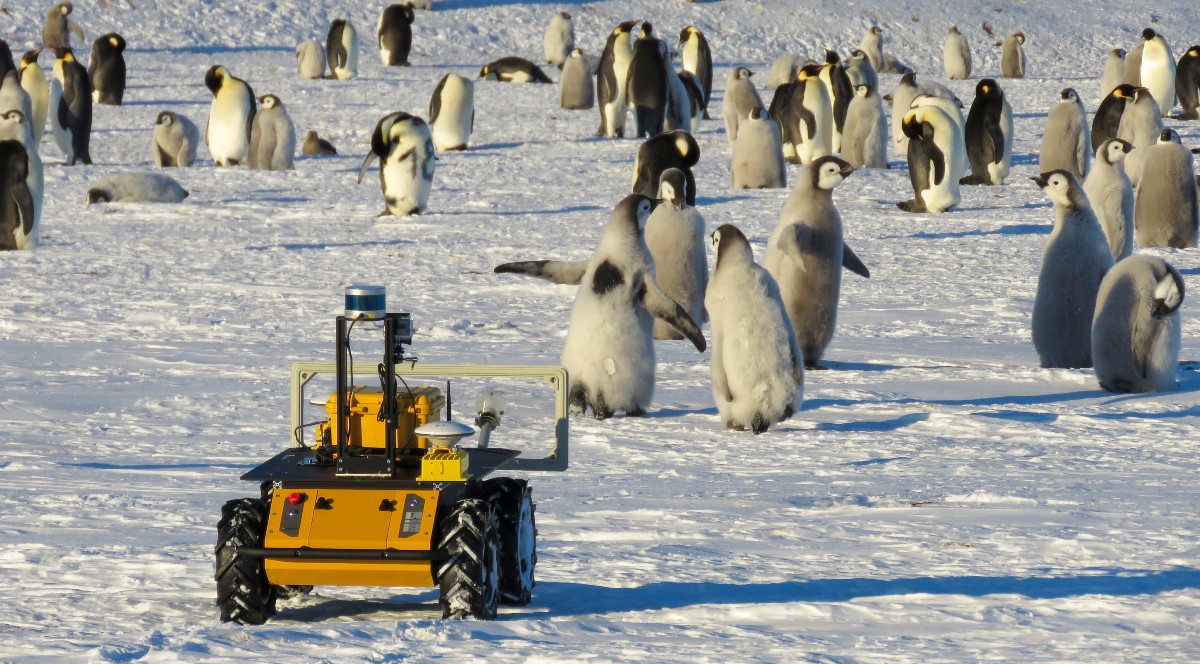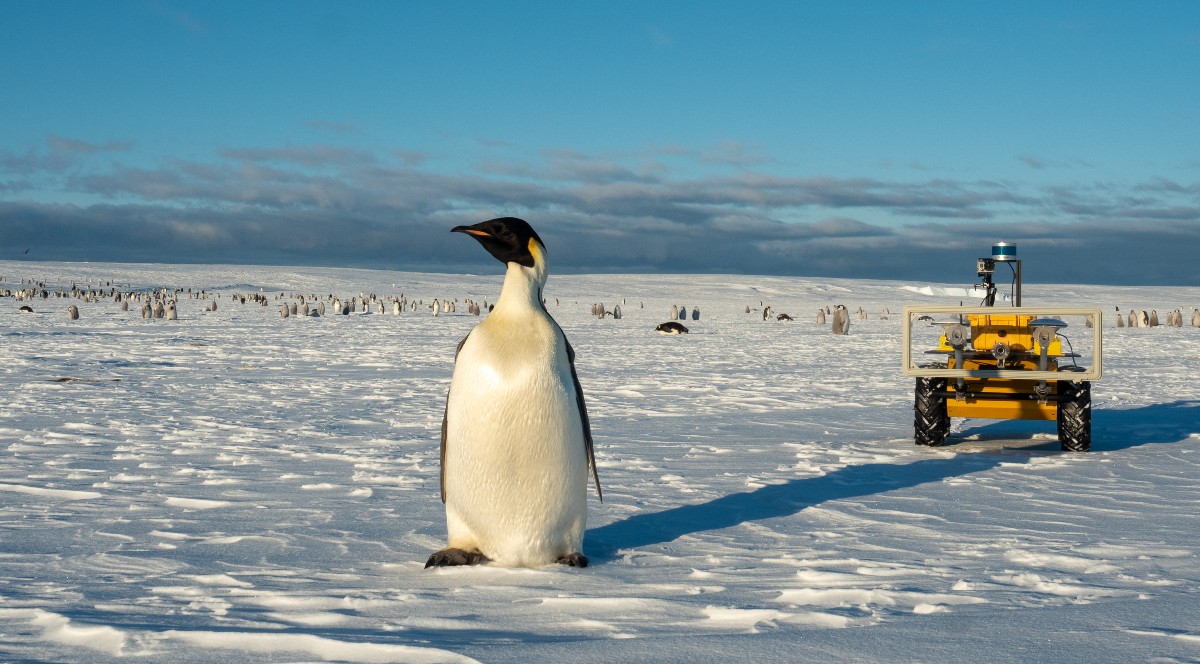Meet the robot keeping an eye on emperor penguins in Antarctica
This robotic penguin observer is changing the way scientists monitor wildlife.

A yellow robot named "ECHO" is helping scientists in Antarctica to keep tabs on some of the continent's penguin residents.
At Antarctica's Atka Bay, researchers at the Woods Hole Oceanographic Institution (WHOI) are monitoring a colony of about 20,000 emperor penguins (Aptenodytes forsteri) with the help of a hybrid rover that's partly autonomous and partly remote-controlled.
The four-wheeled robot is part of a 30-year-long WHOI program that launched in 2017, called "Monitor the health of the Antarctic marine ecosystems using the emperor penguin as a sentinel," or MARE for short. The MARE project monitors emperor penguins and uses them as indicators of overall ecosystem health in Antarctica. The project documents how well the penguins adapt to climate change and its impact on the abundance and distribution of the fish they eat, WHOI representatives said in a statement
ECHO's purpose is to remove any human presence from penguin surveys, as counting and cataloging thousands of birds is time-consuming and can stress the animals, according to WHOI.
Related: Here's why a new penguin colony in Antarctica is cause for concern
To make ECHO the perfect penguin monitoring vehicle, scientists equipped the 3-foot-tall (0.9 meter) rover with lidar (light detection and ranging) and GPS technology to navigate autonomously. ECHO carries sensors that help researchers monitor the penguin colony's numbers and track individuals' movement and behavior.
For example, a radio frequency identification (RFID) antenna scans tiny RFID tags that WHOI researchers implanted in penguin chicks when the youngsters were about five months old. Since the MARE project began, researchers have tagged around 300 penguin chicks each year, according to WHOI. Once ECHO is in range of a penguin's RFID tag — about 34 inches (86 centimeters) away — the robot can retrieve information about overall fitness and breeding status, as well as oceanographic data from when the penguin was in the sea. A 360-degree camera enables scientists to identify individual penguins that ECHO encounters, and GPS data reveals the extent of the penguins' distribution and their habitat hotspots.
Sign up for the Live Science daily newsletter now
Get the world’s most fascinating discoveries delivered straight to your inbox.

Researchers at WHOI modified ECHO from a Husky robot kit created by the robot-manufacturing company Clearpath Robotics. The robotics company awarded WHOI the Husky kit in 2020, Clearpath representatives said in a statement. Prior to ECHO, MARES project data was collected using handheld RFID scanners and human observations.
The data ECHO collects is transmitted over WI-FI to the Single Penguin Observation and Tracking Observatory (SPOT) research center. Located near the German Antarctic research base Neumayer Station III, SPOT can also carry out penguin observations, using 16 high-resolution cameras capable of pinpointing individual penguins within the colony, according to WHOI.
Emperor penguins have no natural predators in Antarctica, so they are good study subjects for scientists looking to understand how animals are affected by ecosystem fluctuations caused by climate change.
However, the birds' survival in a warming world is uncertain. A study published in 2021 in the journal Global Change Biology reported that the rapid decline of Antarctica's ice could cause that emperor penguins to become "quasi-extinct" by 2100 — meaning that although there might still be individual penguins alive, the species as a whole would be doomed to extinction.
"Biodiversity in the Southern Ocean is so small, compared to more temperate regions of the world, that losing any species there is kind of devastating," Daniel Zitterbart, an associate scientist at WHOI, told CNN.
WHOI researchers plan to extend ECHO's data collection efforts to include the penguins' foraging and reproductive behaviors, as well as what happens inside a penguin huddle — a social behavior in which the colony huddles together to stay warm and conserve energy. To infiltrate the penguin huddle, researchers plan to put ECHO inside a 3D-printed replica of a block of ice. ECHO and its icy disguise would then be placed in the path of a forming huddle, which typically happens in winter after the breeding season, while the male birds are brooding their eggs. This disguise would enable ECHO to collect penguin data while the birds are in close contact with each other, according to WHOI.
Originally published on Live Science.

Scott is a staff writer for How It Works magazine and has previously written for other science and knowledge outlets, including BBC Wildlife magazine, World of Animals magazine, Space.com and All About History magazine. Scott has a masters in science and environmental journalism and a bachelor's degree in conservation biology degree from the University of Lincoln in the U.K. During his academic and professional career, Scott has participated in several animal conservation projects, including English bird surveys, wolf monitoring in Germany and leopard tracking in South Africa.










